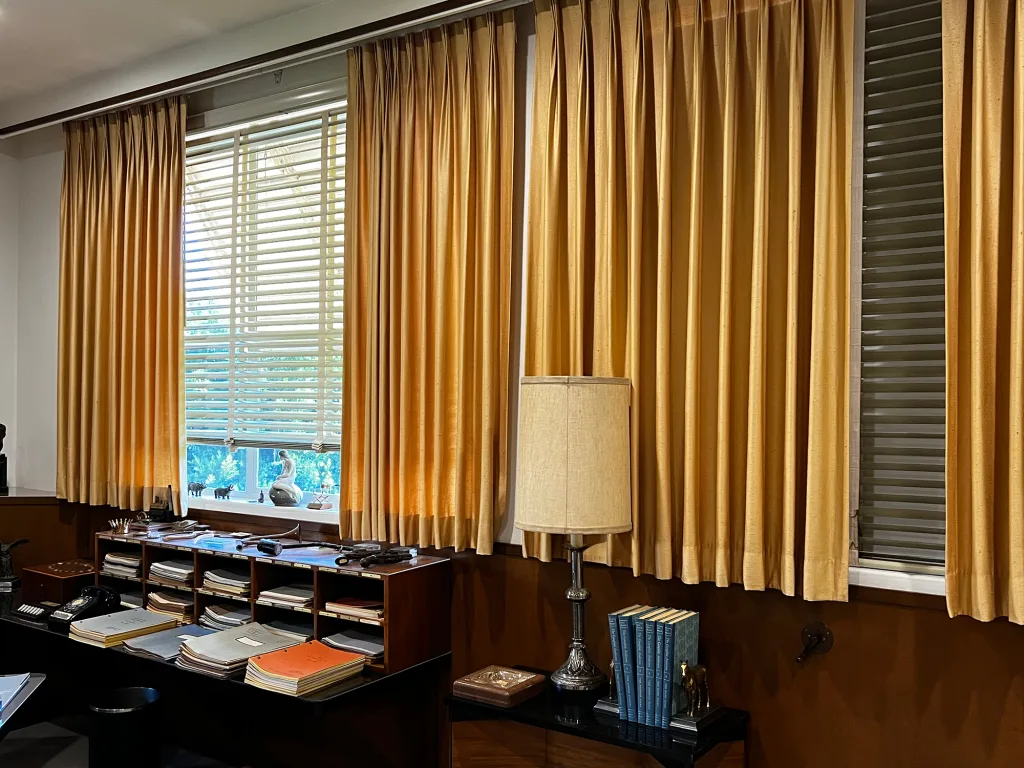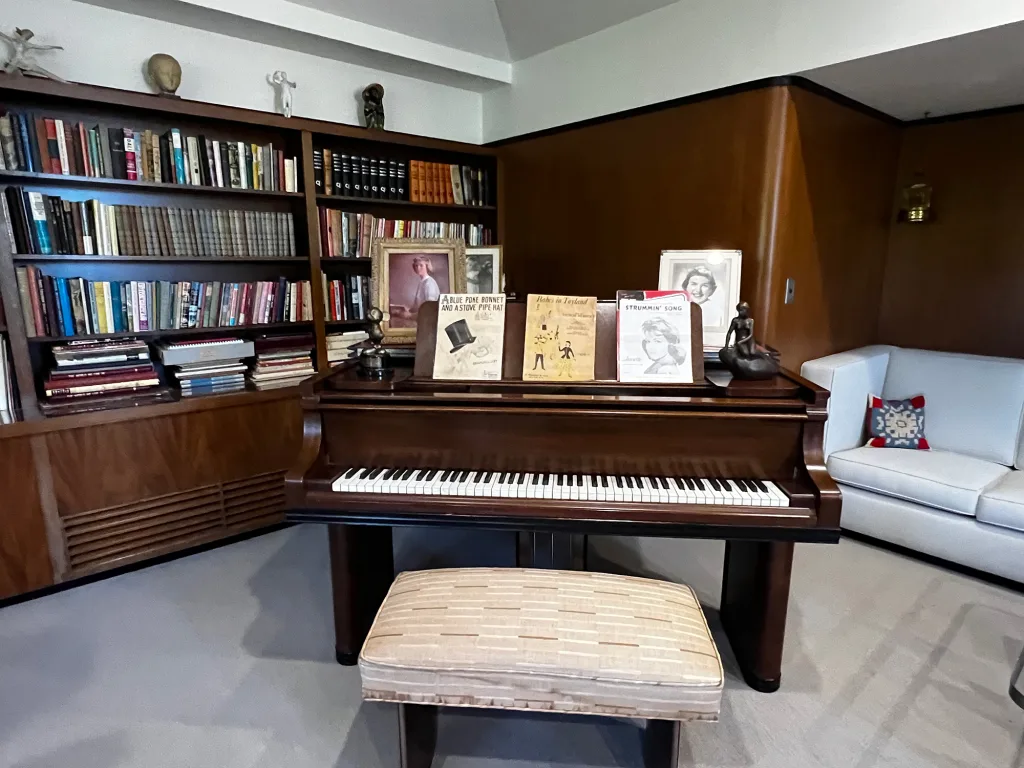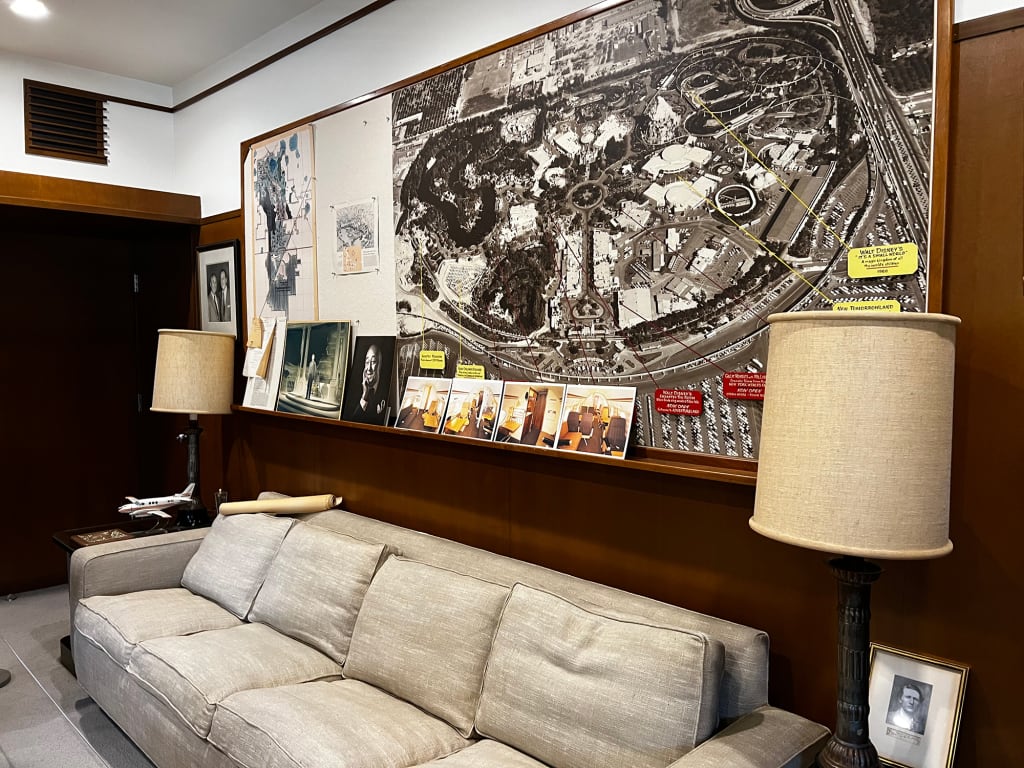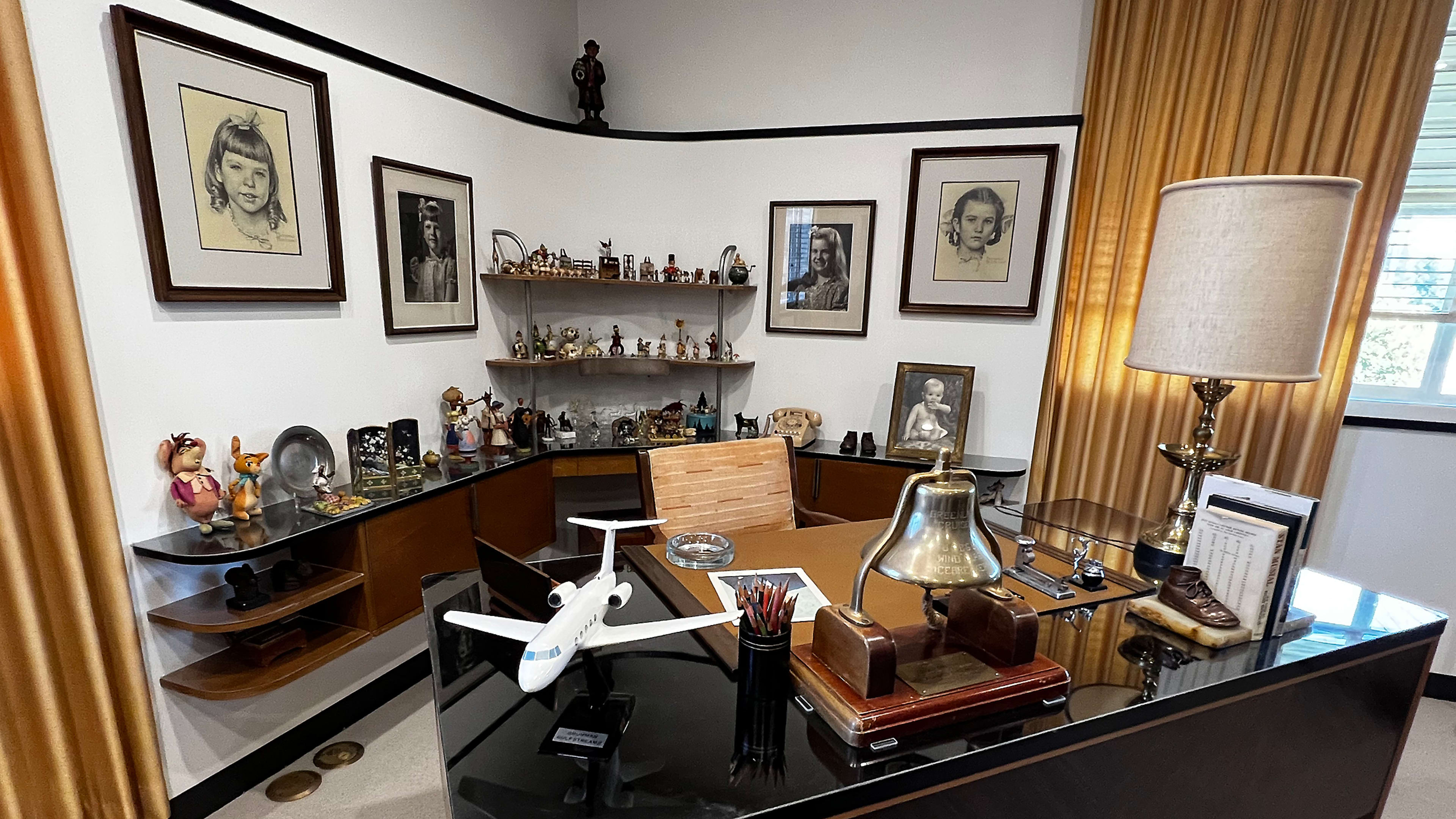In the heart of the Walt Disney Studios campus, in Burbank, California, there’s a towering building, where the Seven Dwarfs hold the roof over their heads, like the caryatids in ancient Greece. The Michael Graves-designed structure is corporate headquarters, where Bob Iger, Josh D’Amaro, and other key executives run the $215 billion entertainment giant.
Off to the left is a smaller building, with a nondescript “Animation” sign above the door. If you walk through the doors of this building, climb the stairs to the third floor and find your way to Suite 3H, you will have discovered history. From 1940 to 1966, that was Walt Disney’s office—and the creative heart of the company.
Stepping into Walt’s office is like stepping back in time. Over the years, it has been used by a number of executives, ranging from CEO Michael Eisner to producer/performer (and former teen idol) Shaun Cassidy to Desperate Housewives creator, Mark Cherry (who reportedly painted the entire office red). In 2015, however, the office was painstakingly restored by the company’s archives department and studio craftsmen (even the curtains are original), to become a place of inspiration for the company.
That was all thanks to the work of Dave Smith, who would go on to start the Walt Disney Archives. In 1970, he went into Walt’s office and photographed it extensively—taking note of where everything was located and how it was arranged before it was emptied.
The office is an area that’s largely off-limits now. It’s not part of the standard studio tour—and many Disney employees have never even been inside. Fast Company was invited to take a peek during a recent visit to the studio.
Today, the office is almost exactly the same as it was the day Walt died, down to the order and position of the books on the shelves. And while there’s plenty of history and nostalgia, it’s hard to stand there and not feel the creative energy crackling.

You enter, as any visitor would, through the secretary’s office, where gatekeepers kept his schedule, ensuring that only invited guests saw Walt. A cabinet along the wall houses a collection of Academy Awards, Emmy Awards, and more. On the small desk, where Walt’s assistant Thelma “Tommie” Wilck sat, the schedule book is open to October 27, 1966. “Epcot” is listed as the first thing on the agenda. Two not-very-comfortable-looking chairs are set against the wall. And ashtrays are omnipresent.
When you enter Walt’s formal office, it’s smaller than you would expect for the head of a studio, though hardly tiny. There’s a white couch against the back wall, over which hangs the mechanical toy bird Walt picked up in New Orleans that became the inspiration for audio-animatronics, which would ultimately differentiate the theme parks. On the glass table in front of the couch, along with ashtrays, is a souvenir booklet from the Banshee Club in NYC, for a 1947 luncheon given to Disney to commemorate the 20th anniversary of Mickey Mouse.
In front of the bookshelf stands a piano, where Walt would regularly have Richard Sherman—part of the songwriting team that created the music for so many classic Disney films—try out new songs. And on certain evenings he’d play “Feed the Birds,” from the film Mary Poppins (Walt’s favorite song). Today, Sherman, age 95, is the only person allowed to play that piano.

Walt’s desk area is the focal point of the room. A model of a Grumman Gulfstream sits in the corner; front and center is a ship’s bell from a U.S. Coast Guard ice breaker, dubbed a Coast Guard Oscar, given to Disney by a vice admiral for the film Men Against the Arctic. Behind the desk are three prominent shelves of knick-knacks—a combination of figurines that Walt collected or was gifted over the years. There’s no obvious rhyme or reason to their arrangement, but they show a side of his personality that’s rarely discussed. Also on the walls are pictures of Walt’s two daughters, along with (reproductions of) Norman Rockwell drawings of them. (Rockwell and Disney were friends.)
Through the next door is the working office, where Walt would meet daily with directors, writers, artists, producers, and more, with the group sometimes completely filling the room. He would start his day at 8:30 a.m. and run through 4:30 p.m. or 5 p.m., after which he would read and edit scripts until approximately 7 p.m. Several piles of those scripts are still stacked in the room today.
Along the wall are aerial plans for Disneyland, noting which rides were complete (including the Enchanted Tiki Room and Great Moments with Mr. Lincoln) and which were in the works (including the Haunted Mansion, described as “Future home of 1,001 ghosts”—that number would later be shrunk to 999). Preliminary plans for what would become Walt Disney World are also hanging there.
The back wall houses a kitchenette, where the cabinets are still filled with Walt’s favorite foods, including V8 juice, Spam, and more canned chili than you could possibly imagine.

There’s a creative buzz in the office, but as Disney, the company, faces its recent challenges and plans one of its largest expansions to date, you’re also reminded that Walt had to be a savvy business leader as well. Little reminders of that are scattered around, like a note from then-board member Card Walker, compiling the domestic gross box office returns of competing studios.
Of course, the leadership styles of Walt Disney and that of the company’s current management are vastly different, something necessitated by the nearly-60-year difference and the changes in the entertainment industry. Iger surely keeps up with how competitors are performing, but he doesn’t personally audition voice talents or approve songs.
He’s obsessive in a different way when it comes to the films, watching each Disney movie between three and five times during the production process. And he’s not afraid to take big swings (as the ongoing $60 billion park expansion would indicate), just like Walt did with Snow White and the launch of Disneyland.
The sense of history in Walt Disney’s office is palpable, as it is throughout the old animation building. This is the place where such beloved classics as Dumbo, Bambi, and Lady and the Tramp were drawn. Work continues today in the same building, but Walt’s office is one of the few places where Disney is content to look backward—and that alone makes it unique.
Recognize your brand’s excellence by applying to this year’s Brands That Matter Awards before the final deadline, June 7.
Sign up for Brands That Matter notifications here.
